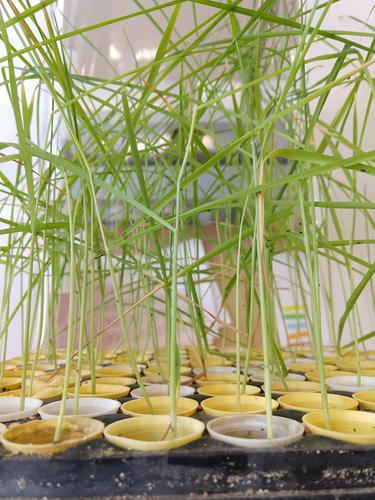当前位置:
X-MOL 学术
›
Funct. Ecol.
›
论文详情
Our official English website, www.x-mol.net, welcomes your
feedback! (Note: you will need to create a separate account there.)
Vector demography, dispersal and the spread of disease: Experimental epidemics under elevated resource supply
Functional Ecology ( IF 4.6 ) Pub Date : 2020-09-07 , DOI: 10.1111/1365-2435.13672 Alexander T. Strauss 1 , Jeremiah A. Henning 1 , Anita Porath‐Krause 1 , Ashley L. Asmus 1 , Allison K. Shaw 1 , Elizabeth T. Borer 1 , Eric W. Seabloom 1
中文翻译:

媒介人口统计学,疾病传播和传播:资源供应增加下的实验流行病
更新日期:2020-09-07
Functional Ecology ( IF 4.6 ) Pub Date : 2020-09-07 , DOI: 10.1111/1365-2435.13672 Alexander T. Strauss 1 , Jeremiah A. Henning 1 , Anita Porath‐Krause 1 , Ashley L. Asmus 1 , Allison K. Shaw 1 , Elizabeth T. Borer 1 , Eric W. Seabloom 1
Affiliation

|
- The spread of many diseases depends on the demography and dispersal of arthropod vectors. Classic epidemiological theory typically ignores vector dynamics and instead makes the simplifying assumption of frequency‐dependent transmission. Yet, vector ecology may be critical for understanding the spread of disease over space and time and how disease dynamics respond to environmental change.
- Here, we ask how environmental change shapes vector demography and dispersal, and how these traits of vectors govern the spatiotemporal spread of disease.
- We developed disease models parameterised by traits of vectors and fit them to experimental epidemics. The experiment featured a viral pathogen (CYDV‐RPV) vectored by aphids Rhopalosiphum padi among populations of grass hosts Avena sativa under two rates of environmental resource supply (i.e. fertilisation of the host). We compared a non‐spatial model that ignores vector movement, a lagged dispersal model that emphasises the delay between vector reproduction and dispersal, and a travelling wave model that generates waves of infections across space and time.
- Resource supply altered both vector demography and dispersal. The lagged dispersal model fit best, indicating that vectors first reproduced locally and then dispersed globally among hosts in the experiment. Elevated resources decreased vector population growth rates, nearly doubled their carrying capacity per host, increased dispersal rates when vectors carried the virus, and homogenised disease risk across space.
- Together, the models and experiment show how environmental eutrophication can shape spatial disease dynamics—for example, homogenising disease risk across space—by altering the demography and behaviour of vectors.
中文翻译:

媒介人口统计学,疾病传播和传播:资源供应增加下的实验流行病
- 许多疾病的传播取决于节肢动物媒介的人口统计和传播。经典的流行病学理论通常忽略了向量动力学,而是简化了基于频率的传播的假设。然而,媒介生态学对于理解疾病在空间和时间上的传播以及疾病动态如何响应环境变化可能至关重要。
- 在这里,我们问环境变化如何影响媒介人口统计和传播,以及媒介的这些特征如何控制疾病的时空传播。
- 我们开发了通过载体特性参数化的疾病模型,并使它们适合实验流行病。该实验的特征是,在两种环境资源供应率(即宿主受精)下,由蚜虫Rhopalosiphum padi介导的一种病毒病原体(CYDV-RPV)在草宿主Avena sativa种群中传播。我们比较了忽略向量运动的非空间模型,强调向量再现和传播之间延迟的滞后扩散模型,以及在空间和时间上产生感染波的行波模型。
- 资源供应改变了矢量人口统计和传播。的滞后分散模型拟合最好,表明向量第一本地再现,然后在实验主机之间全球分散。资源的增加降低了媒介种群的增长速度,使每位宿主的承载能力几乎增加了一倍,当媒介携带病毒时传播速度增加,并且跨空间的疾病风险均一。
- 这些模型和实验一起显示了环境富营养化如何通过改变媒介的人口统计和行为方式来塑造空间疾病的动态变化,例如,使整个空间的疾病风险均匀化。











































 京公网安备 11010802027423号
京公网安备 11010802027423号